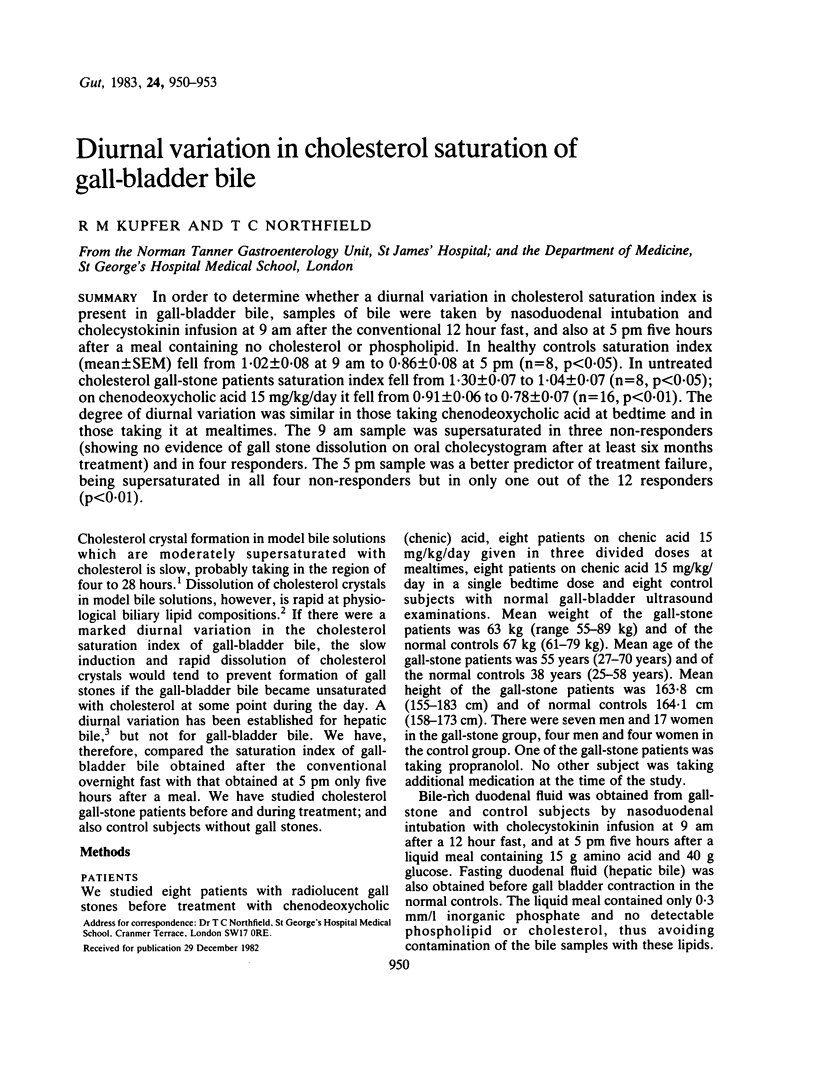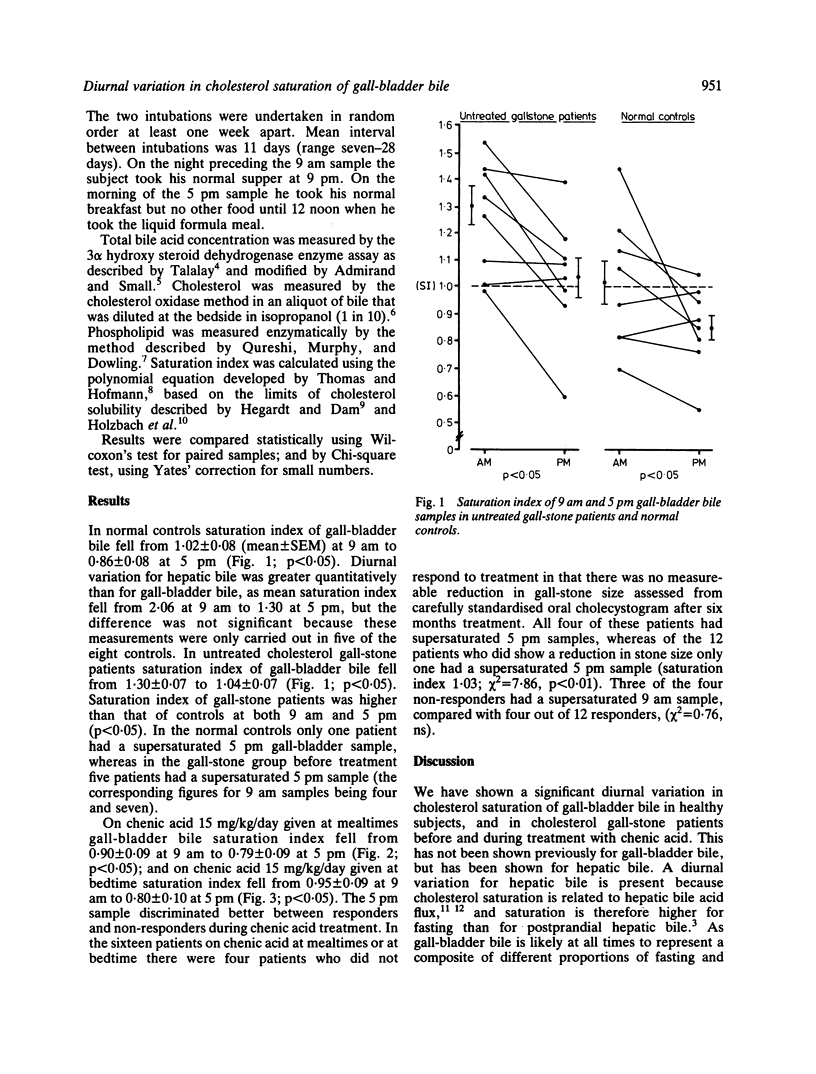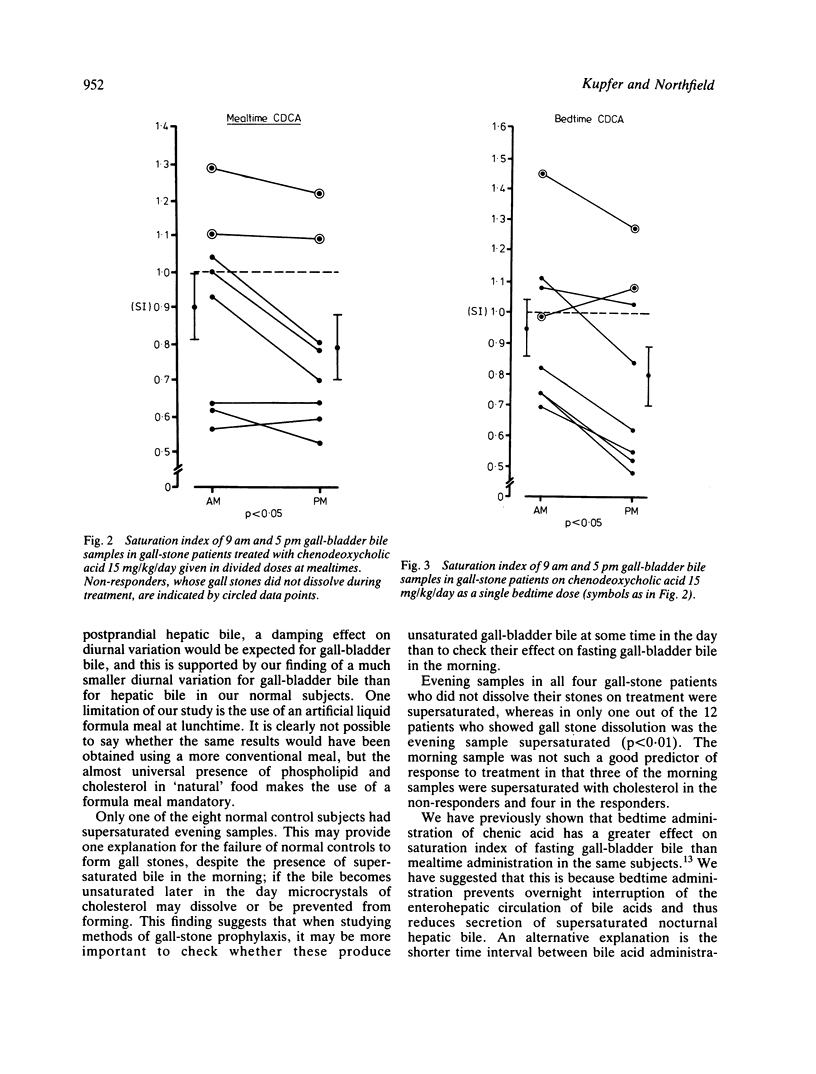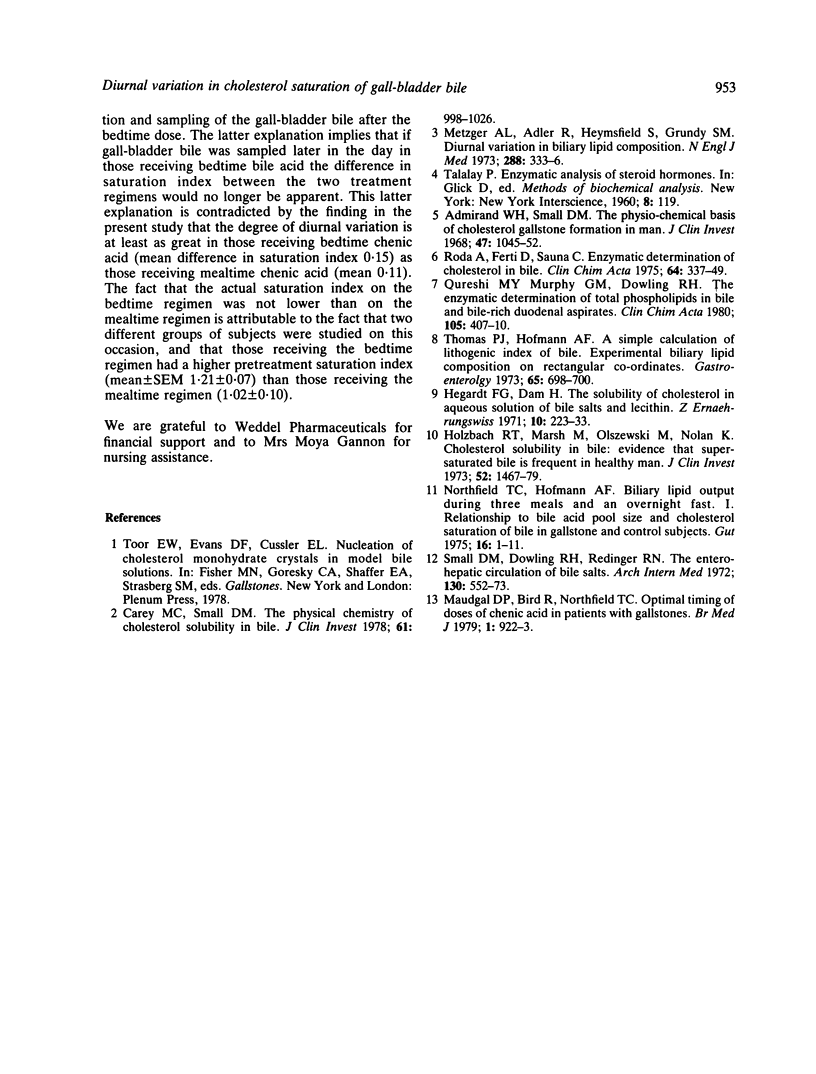Abstract
In order to determine whether a diurnal variation in cholesterol saturation index is present in gall-bladder bile, samples of bile were taken by nasoduodenal intubation and cholecystokinin infusion at 9 am after the conventional 12 hour fast, and also at 5 pm five hours after a meal containing no cholesterol or phospholipid. In healthy controls saturation index (mean +/- SEM) fell from 1.02 +/- 0.08 at 9 am to 0.86 +/- 0.08 at 5 pm (n = 8, p less than 0.05). In untreated cholesterol gall-stone patients saturation index fell from 1.30 +/- 0.07 to 1.04 +/- 0.07 (n = 8, p less than 0.05); on chenodeoxycholic acid 15 mg/kg/day it fell from 0.91 +/- 0.06 to 0.78 +/- 0.07 (n = 16, p less than 0.01). The degree of diurnal variation was similar in those taking chenodeoxycholic acid at bedtime and in those taking it at mealtimes. The 9 am sample was supersaturated in three non-responders (showing no evidence of gall stone dissolution on oral cholecystogram after at least six months treatment) and in four responders. The 5 pm sample was a better predictor of treatment failure, being supersaturated in all four non-responders but in only one out of the 12 responders (p less than 0.01).
Full text
PDF



Selected References
These references are in PubMed. This may not be the complete list of references from this article.
- Carey M. C., Small D. M. The physical chemistry of cholesterol solubility in bile. Relationship to gallstone formation and dissolution in man. J Clin Invest. 1978 Apr;61(4):998–1026. doi: 10.1172/JCI109025. [DOI] [PMC free article] [PubMed] [Google Scholar]
- Hegardt F. G., Dam H. The solubility of cholesterol in aqueous solutions of bile salts and lecithin. Z Ernahrungswiss. 1971 Apr;10(3):223–233. doi: 10.1007/BF02020933. [DOI] [PubMed] [Google Scholar]
- Holzbach R. T., Marsh M., Olszewski M., Holan K. Cholesterol solubility in bile. Evidence that supersaturated bile is frequent in healthy man. J Clin Invest. 1973 Jun;52(6):1467–1479. doi: 10.1172/JCI107321. [DOI] [PMC free article] [PubMed] [Google Scholar]
- Maudgal D. P., Bird R., Northfield T. C. Optimal timing of doses of chenic acid in patients with gall stones. Br Med J. 1979 Apr 7;1(6168):922–923. doi: 10.1136/bmj.1.6168.922. [DOI] [PMC free article] [PubMed] [Google Scholar]
- Metzger A. L., Adler R., Heymsfield S., Grundy S. M. Diurnal variation in biliary lipid composition. Possible role in cholesterol gallstone formation. N Engl J Med. 1973 Feb 15;288(7):333–336. doi: 10.1056/NEJM197302152880702. [DOI] [PubMed] [Google Scholar]
- Northfield T. C., Hofmann A. F. Biliary lipid output during three meals and an overnight fast. I. Relationship to bile acid pool size and cholesterol saturation of bile in gallstone and control subjects. Gut. 1975 Jan;16(1):1–11. doi: 10.1136/gut.16.1.1. [DOI] [PMC free article] [PubMed] [Google Scholar]
- Qureshi M. Y., Murphy G. M., Dowling R. H. The enzymatic determination of total phospholipids in bile and bile-rich duodenal aspirates. Clin Chim Acta. 1980 Aug 19;105(3):407–410. doi: 10.1016/0009-8981(80)90123-0. [DOI] [PubMed] [Google Scholar]
- Roda A., Festi D., Sama C., Mazzella G., Alini R., Roda E., Barbara L. Enzymatic determination of cholesterol in bile. Clin Chim Acta. 1975 Nov 3;64(3):337–341. doi: 10.1016/0009-8981(75)90364-2. [DOI] [PubMed] [Google Scholar]
- Small D. M., Dowling R. H., Redinger R. N. The enterohepatic circulation of bile salts. Arch Intern Med. 1972 Oct;130(4):552–573. [PubMed] [Google Scholar]
- Thomas P. J., Hofmann A. F. Letter: A simple calculation of the lithogenic index of bile: expressing biliary lipid composition on rectangular coordinates. Gastroenterology. 1973 Oct;65(4):698–700. [PubMed] [Google Scholar]


